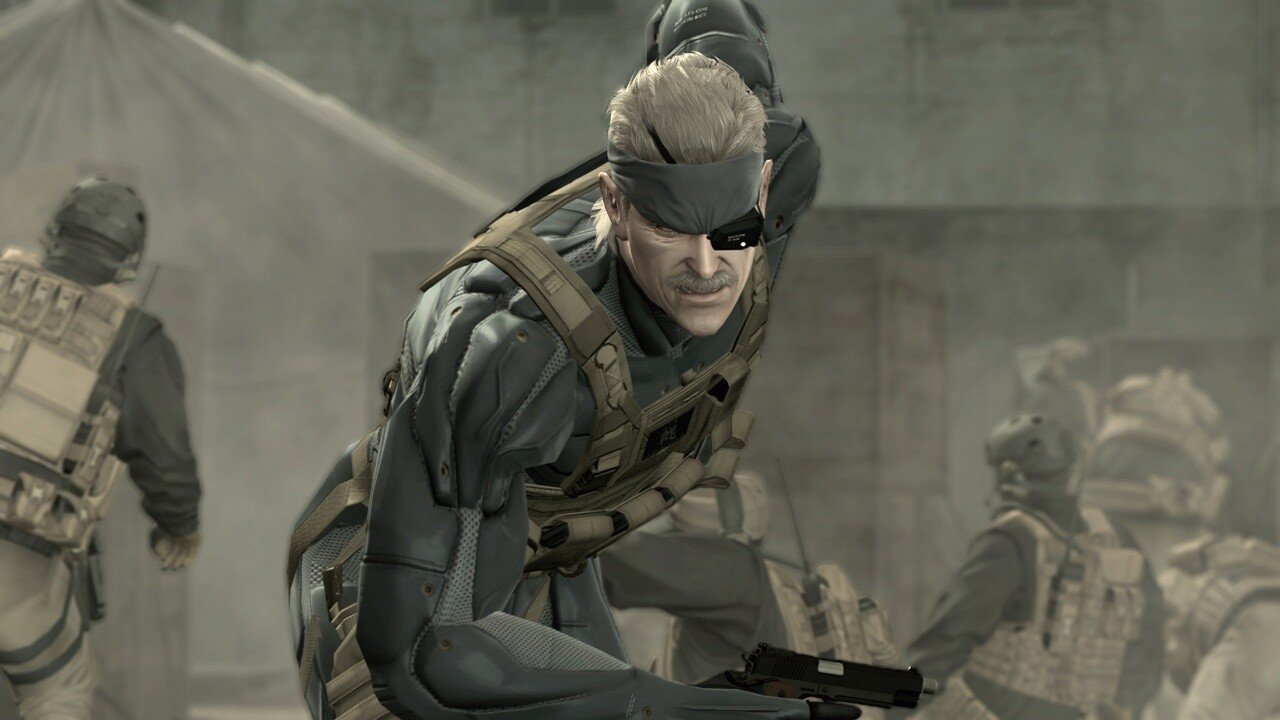Around the time that game hardware bumped up its storage capabilities with the original PlayStation’s CD-ROMs and the following generation’s DVD-based titles, non-interactive storytelling became a major trend in the medium. While narrative has always had a place in games, its importance grew drastically alongside technological advancements in audiovisual fidelity.
The end result of this was/is a videogame feature that is much maligned, but doesn’t show much evidence of disappearing: the cutscene.
Cutscenes, whether a one minute interlude in a shooter or a forty-five minute exposition dump in an action or role-playing game, have been a staple of the medium for years. At first cutscenes were welcomed. Around the time of the PlayStation’s Final Fantasy VII and its (astonishing for the time) full motion video sequences, players were more than willing to sit through extended, computer generated breaks from gameplay. By the time of Metal Gear Solid 4: Guns of the Patriot’s release on the PlayStation 3, many players and critics began to voice loud complaints that centred on the series’ tendency for extremely long cutscenes.
What changed during this time?
The era of the PlayStation 2, XBox and Gamecube tested the patience of many players by filling games with frequent, non-interactive sequences. What’s interesting is that, during this time, the popular opinion (looking at reviews and sales) wasn’t as opposed to this kind of design as it is now. The backlash of some players against Metal Gear Solid’s most recent, numbered entry shows a different trend. Sure, some of the audience has poked fun or criticized the series’ lengthy cutscenes since its second and third entries, but the sheer volume of backlash against Metal Gear Solid 4’s videos demonstrated a more noticeable change in general attitude.
It’s becoming more and more difficult to find mainstream videogames that even attempt substantial cutscenes anymore. To guess at why this is I’d point to another landmark in cutscenes: Dead Island’s inventive, breathtaking trailer from early last year. Many players, struck by the cinematic feel of, what is in essence, just an extremely well crafted cutscene, felt betrayed when the game itself was released and turned out to be very different in tone. The disparity in gameplay and cinematic — even in a promotional video that chose to advertise the game without touching on much of anything to do with how it actually played — put off a lot of people.
Now that the line has begun to blur between cutscene and gameplay presentation many audiences seem to react badly to pre-rendered visuals because they are so often misleading. Even though they’re not perfect, Quantic Dream’s Indigo Prophecy/Fahrenheit and Heavy Rain have demonstrated this in a powerful way. These games, despite the fact that they are in essence game-length cutscenes rarely punctuated with exploration mechanics, are well received because they’ve been advertised as interactive stories, not traditional games. Most players pick up the controller knowing that these titles will involve as much watching as button-pressing and seem, for the most part, happy with the approach.
As in-game rendering and animation technology continues to evolve, the continued viability of the cutscene in mainstream games is uncertain. In the future it may be regarded as a clumsy tool, necessitated by technology, to bridge the gap between early games and later generations of cinematic yet seamlessly interactive titles. The cutscene provides emotional or presentational shortcuts that games now have the tools to create in other ways. Instead of jarring the player by fading from a title’s gameplay to its cutscenes, exposition can now more easily take place within the framework of play itself. The line between playable and non-playable segments will, most likely, continue to blur until it’s hard to distinguish between when a title is taking control away from us and when it still expects us to participate.
***
Reid McCarter is a writer, editor and musician living and working in Toronto. He has written for sites and magazines including Kill Screen, The Escapist and C&G Magazine. He founded, writes and edits the videogame blog digitallovechild.com and is Twitter-ready @reidmccarter.




